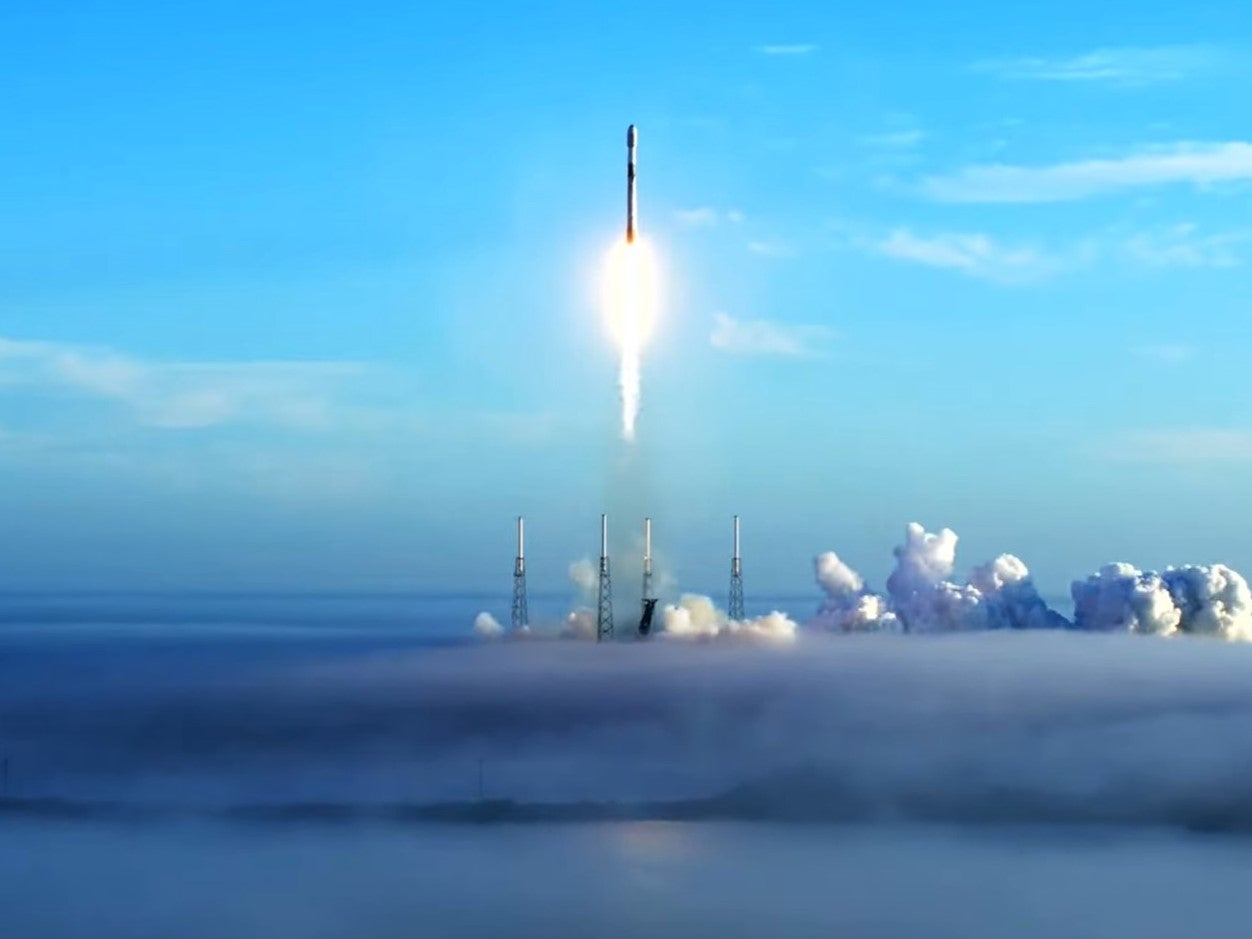SpaceX breaks rocket launch record with latest Starlink mission
Elon Musk hopes to deliver high-speed broadband to more than 99 per cent of the populated world through internet satellites

Your support helps us to tell the story
From reproductive rights to climate change to Big Tech, The Independent is on the ground when the story is developing. Whether it's investigating the financials of Elon Musk's pro-Trump PAC or producing our latest documentary, 'The A Word', which shines a light on the American women fighting for reproductive rights, we know how important it is to parse out the facts from the messaging.
At such a critical moment in US history, we need reporters on the ground. Your donation allows us to keep sending journalists to speak to both sides of the story.
The Independent is trusted by Americans across the entire political spectrum. And unlike many other quality news outlets, we choose not to lock Americans out of our reporting and analysis with paywalls. We believe quality journalism should be available to everyone, paid for by those who can afford it.
Your support makes all the difference.SpaceX has broken its own launch record for the number of rockets sent to space in a single year.
The latest Starlink mission saw another batch of internet satellites delivered to low-Earth orbit, lifting off from Cape Canaveral in Florida on Thursday.
It marked the 27th successful launch for the private space firm in 2021, beating the 26 launches it achieved in 2020.
Up to six more launches are planned before the end of the year, while 2022 could see even more lift offs for SpaceX.
The Falcon 9 rocket launched 48 Starlink satellites into orbit, bringing the total constellation size to more than 1,750.
SpaceX plans to launch up to 42,000 Starlink satellites into orbit in order to deliver high-speed internet to more than 99 per cent of the populated world.
“Starlink enables video calls, online gaming, streaming, and other high data rate activities that historically have not been possible with satellite internet,” the firm’s website claims.
“While most satellite internet services today come from single geostationary satellites that orbit the planet at about 35,000km, Starlink is a constellation of multiple satellites that orbit the planet much closer to Earth, at about 550km, and cover the entire globe.
“Because Starlink satellites are in a low orbit, the round-trip data time between the user and the satellite – also known as latency – is much lower than with satellites in geostationary orbit.”

Starlink users are able to connect to the service by purchasing a router and dish from SpaceX and connecting through an app. Average download speeds currently range between 100 Mb/s and 200 Mb/s and latency as low as 20ms in most locations.
In October, SpaceX boss Elon Musk said the company was in talks with airlines to deliver “low latency ~half gigabit connectivity in the air” through Starlink.

Join our commenting forum
Join thought-provoking conversations, follow other Independent readers and see their replies
Comments